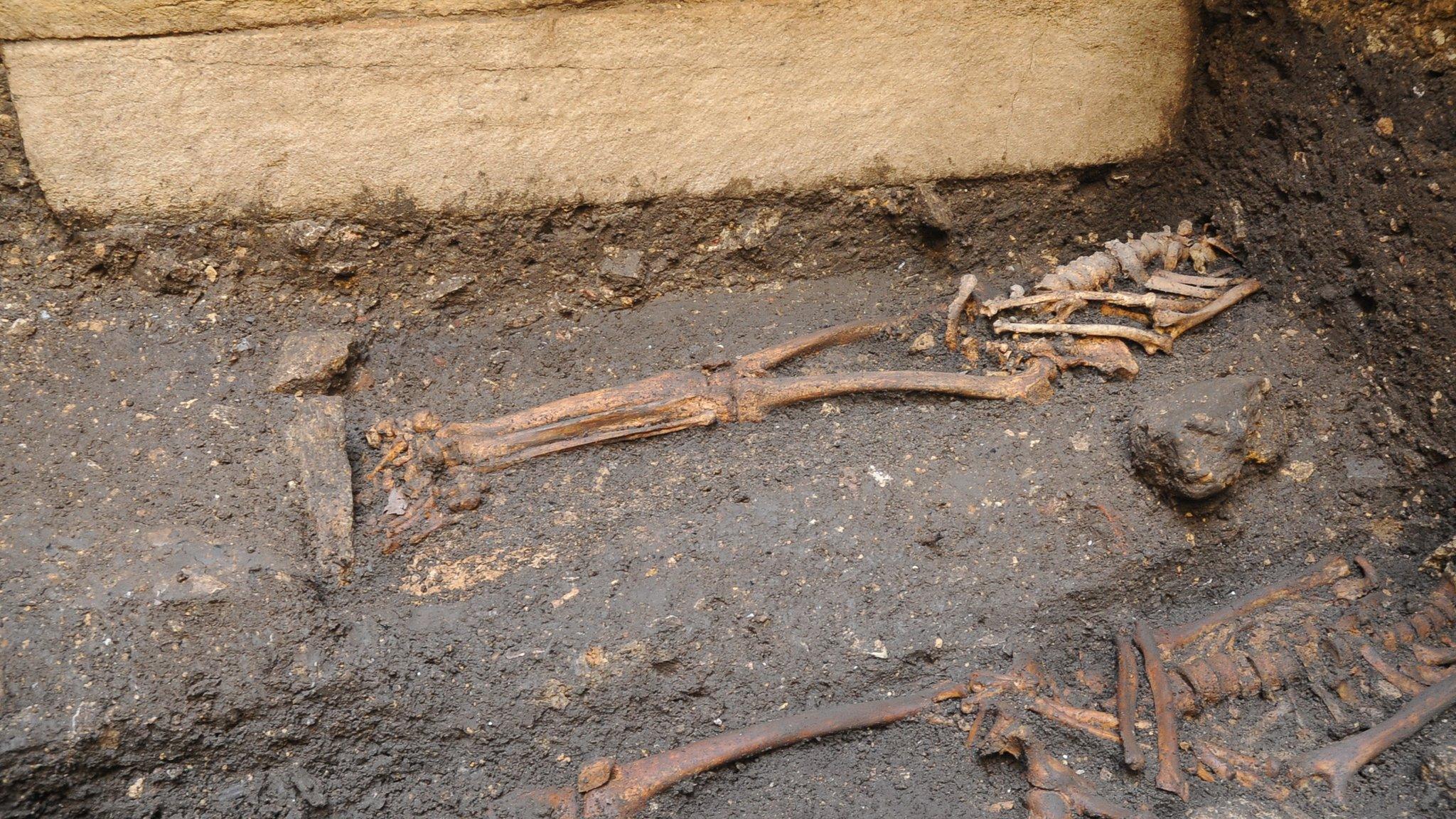Face of Lincoln Castle's Saxon man reconstructed
- Published
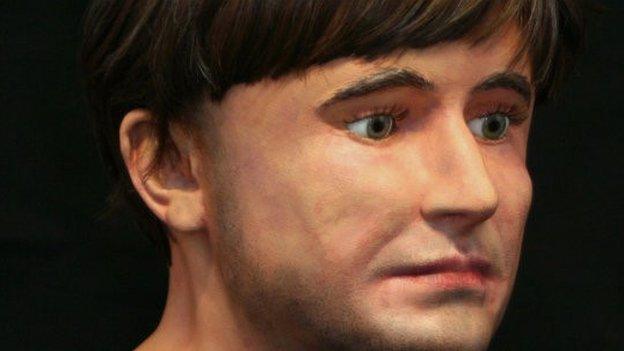
The facial reconstruction of the man features as part of a new exhibition at Lincoln Castle
The face of a Saxon man whose skeleton was discovered on the site of an old church at Lincoln Castle has been reconstructed.
The reconstruction, carried out by staff at the University of Dundee, will form part of a forthcoming exhibition.
The skeleton was one of ten sets of remains found at a previously undiscovered church, thought to be at least 1,000 years old, in 2013.
Analysis of the remains showed the man was between 36 and 45 when he died.
'Excellent preservation'
His origins have been linked to the east of England, possibly Lincolnshire, and his skeleton dates back to between 1035 and 1070AD.
The remains showed signs of degenerative bone diseases, suggesting an active and strenuous lifestyle.
Caroline Erolin, lecturer in forensic and medical art in Dundee, said: "His grave lay slightly under an important sarcophagus burial, which had resulted in excellent preservation of his skull making it the best candidate among the skeletons for facial reconstruction."
The remains were found during a £22m renovation of Lincoln Castle, which has seen the creation of a new Magna Carta vault and an audio walk around the castle's walls.
It is believed the undiscovered stone church was built in the Anglo-Saxon period, after the Romans left Britain and before the Norman conquest of 1066.
Exhibits from the dig, including the facial reconstruction, are set to be unveiled at the official opening of Lincoln Castle on 8 June.

Past conquests
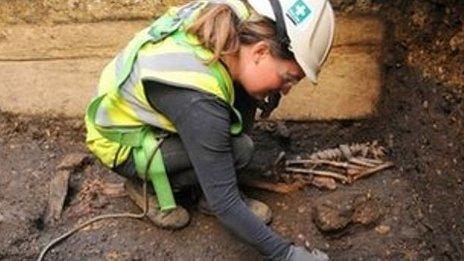
A Roman fort was built at the site in about 60AD
The Romans abandoned Lincoln and Britain in 410AD
William the Conqueror built Lincoln Castle in 1068 on the site of the Roman fortress
For 900 years the castle was used as a court and prison

- Published9 October 2013

- Published24 August 2013
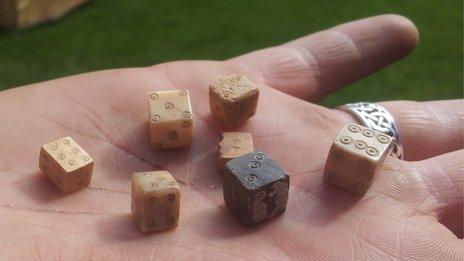
- Published30 June 2013

- Published23 June 2013
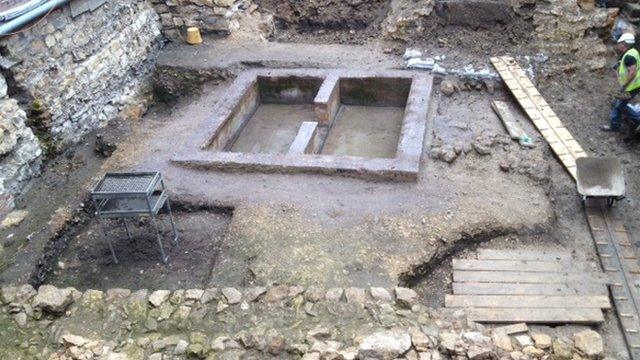
- Published16 May 2013
